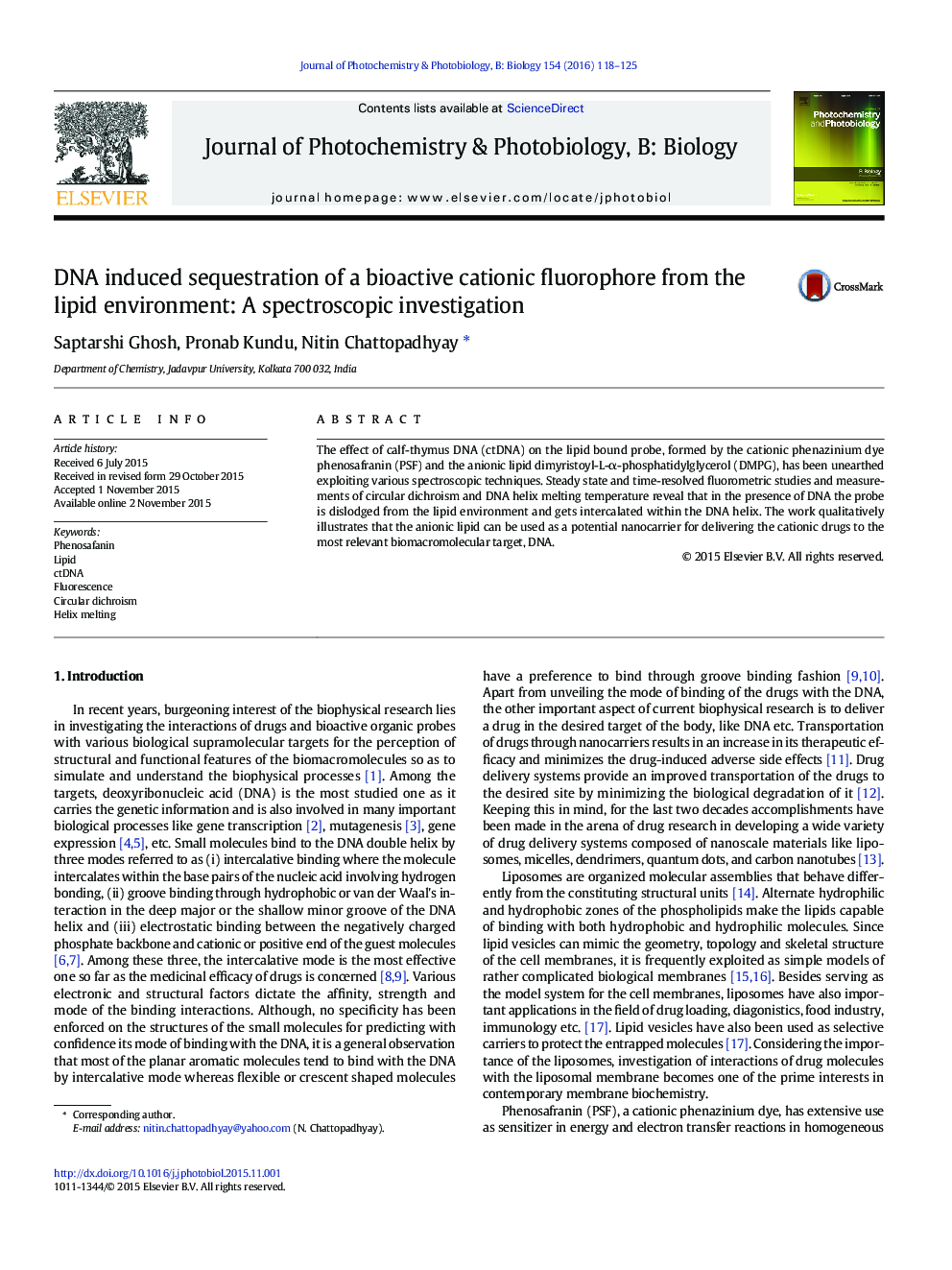| Article ID | Journal | Published Year | Pages | File Type |
|---|---|---|---|---|
| 29392 | Journal of Photochemistry and Photobiology B: Biology | 2016 | 8 Pages |
•Binding interactions of PSF with lipid and ctDNA have been investigated independently.•Effect of DNA on the lipid bound probe is explored.•In the presence of DNA, the probe is released from the lipid environment and intercalated within DNA.•Competitive binding is ascribed to be responsible for the sequestration.
The effect of calf-thymus DNA (ctDNA) on the lipid bound probe, formed by the cationic phenazinium dye phenosafranin (PSF) and the anionic lipid dimyristoyl-L-α-phosphatidylglycerol (DMPG), has been unearthed exploiting various spectroscopic techniques. Steady state and time-resolved fluorometric studies and measurements of circular dichroism and DNA helix melting temperature reveal that in the presence of DNA the probe is dislodged from the lipid environment and gets intercalated within the DNA helix. The work qualitatively illustrates that the anionic lipid can be used as a potential nanocarrier for delivering the cationic drugs to the most relevant biomacromolecular target, DNA.
Graphical AbstractFigure optionsDownload full-size imageDownload as PowerPoint slide
